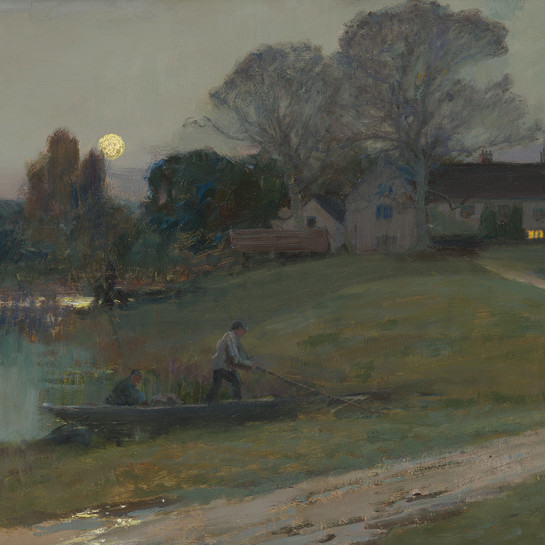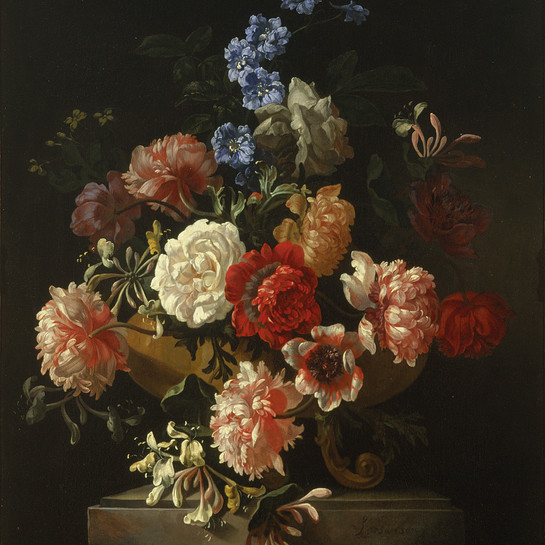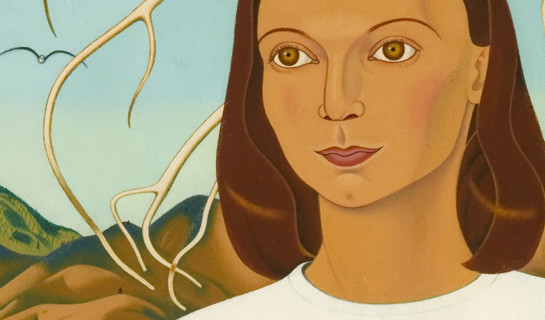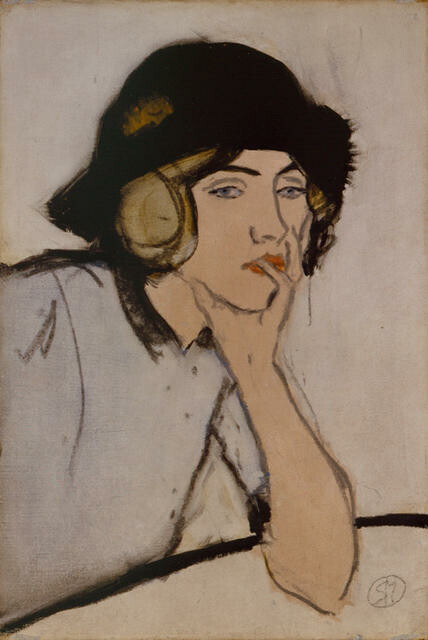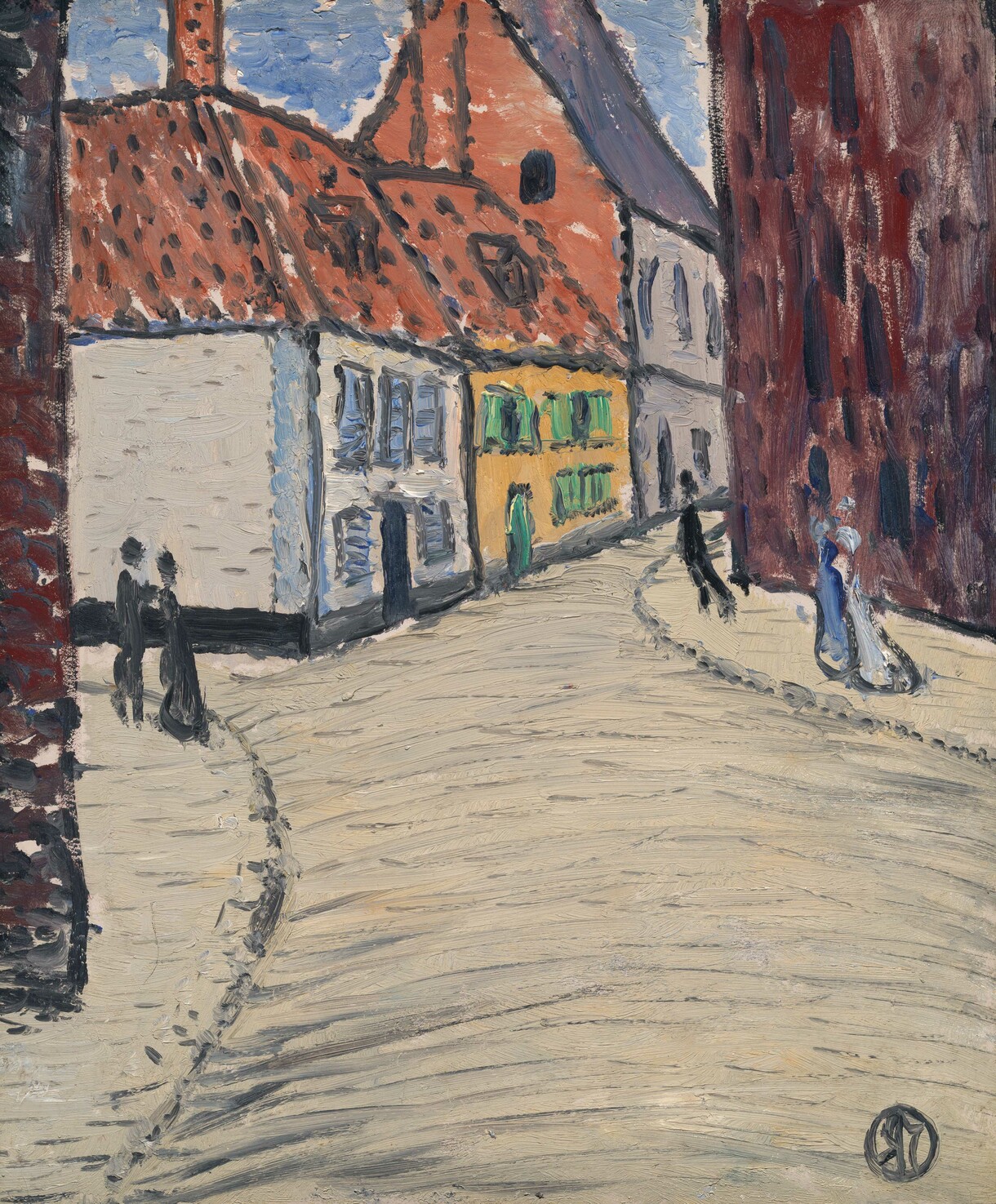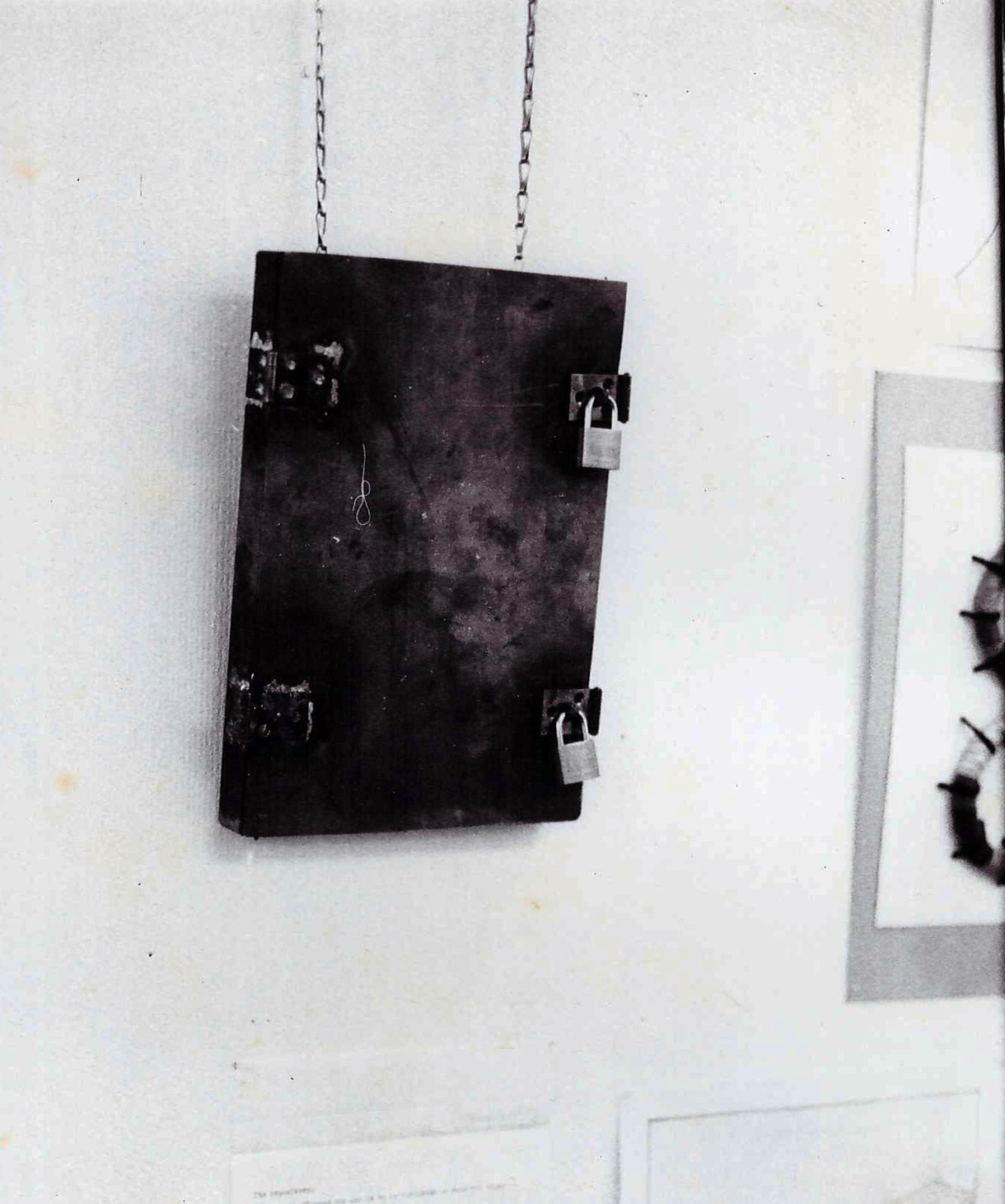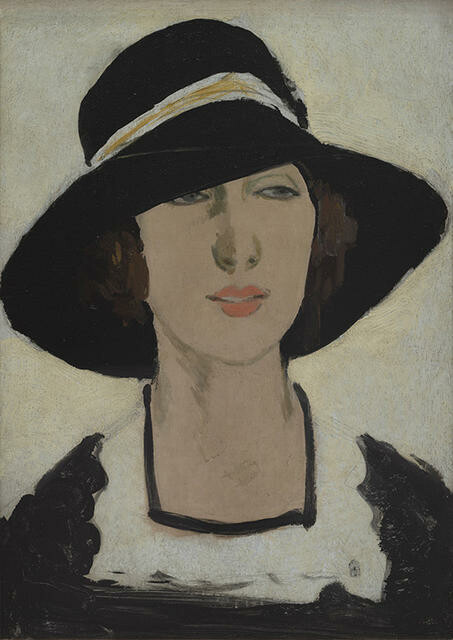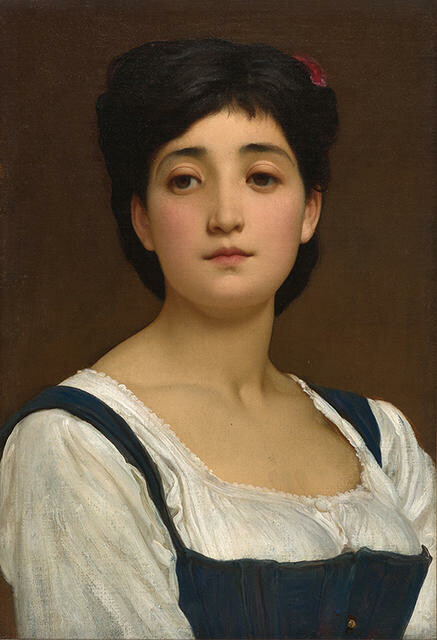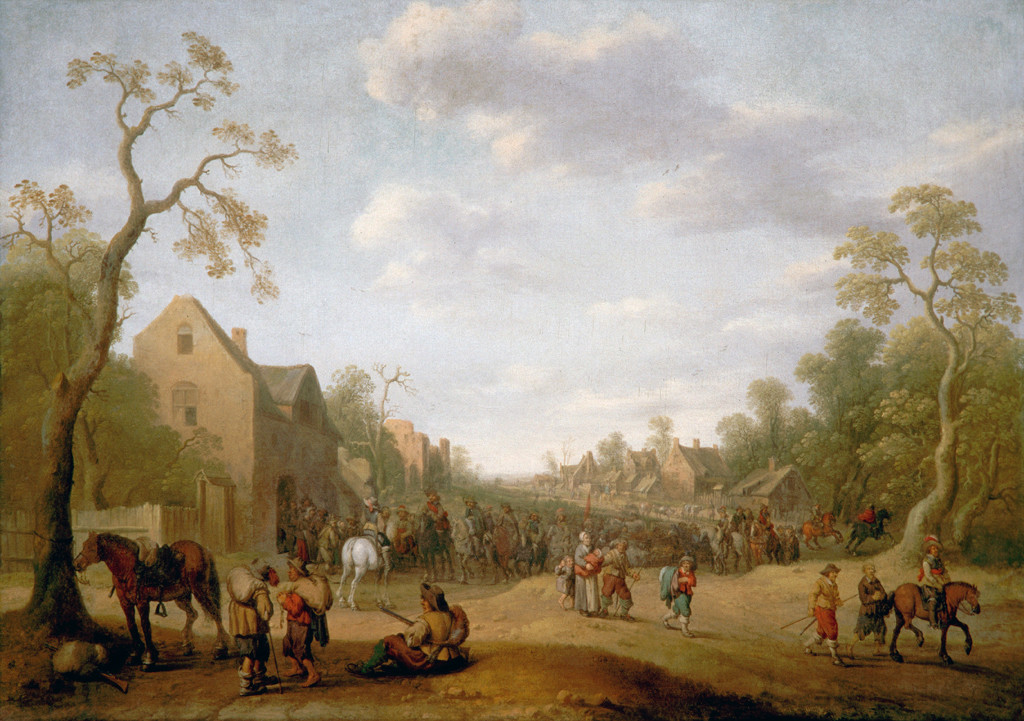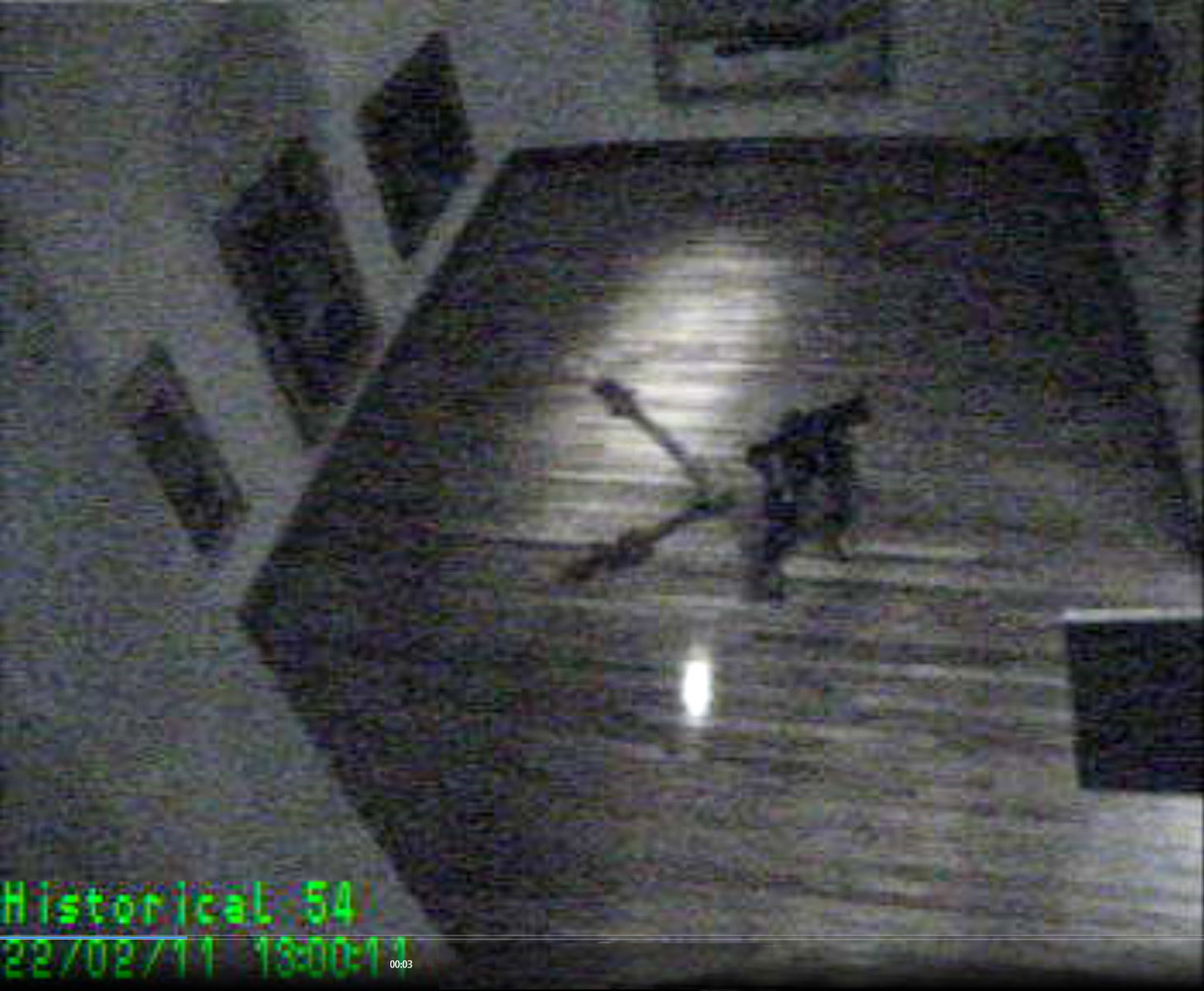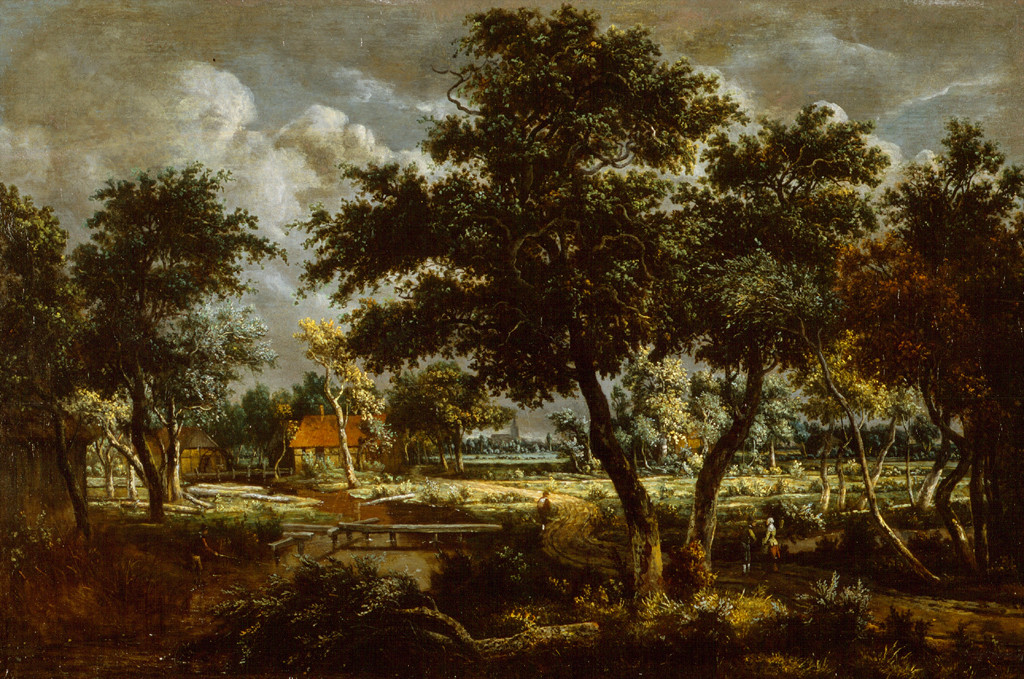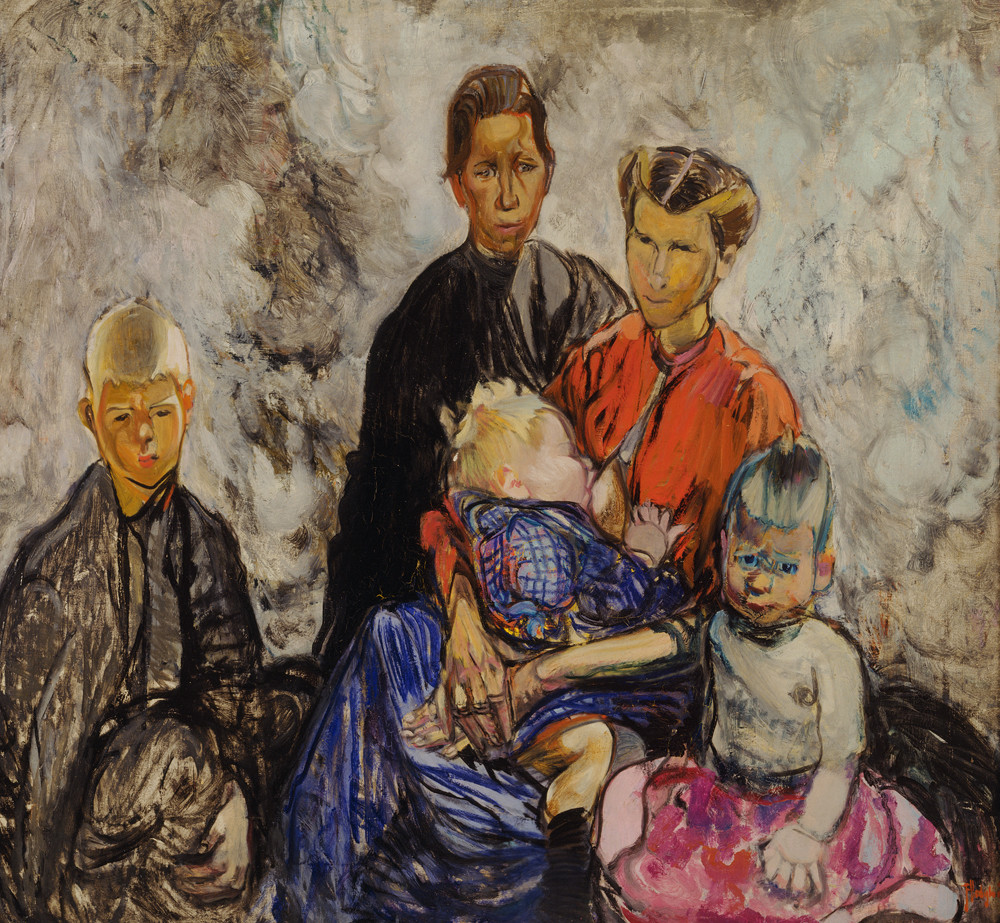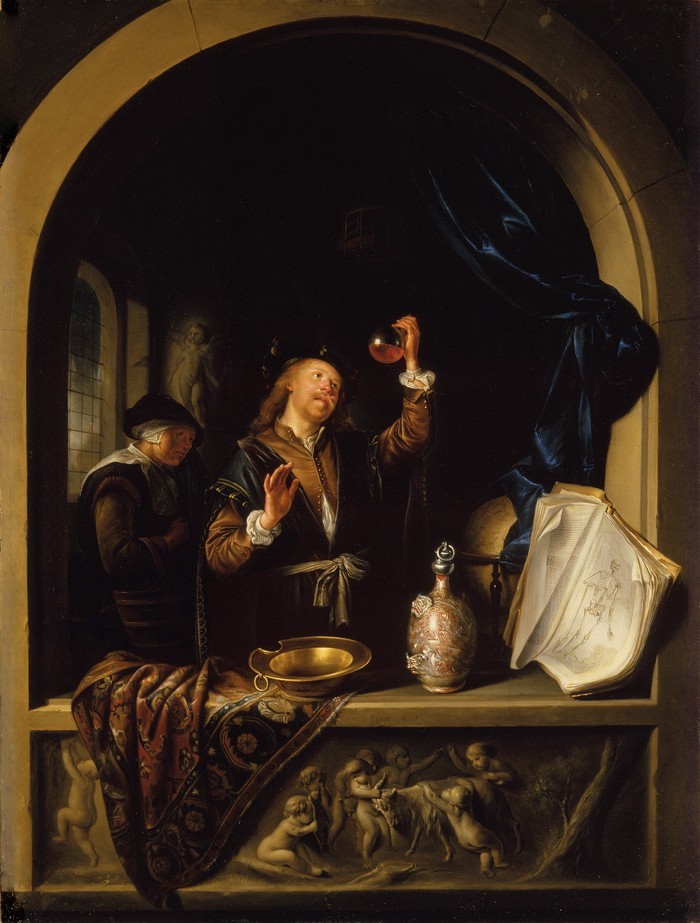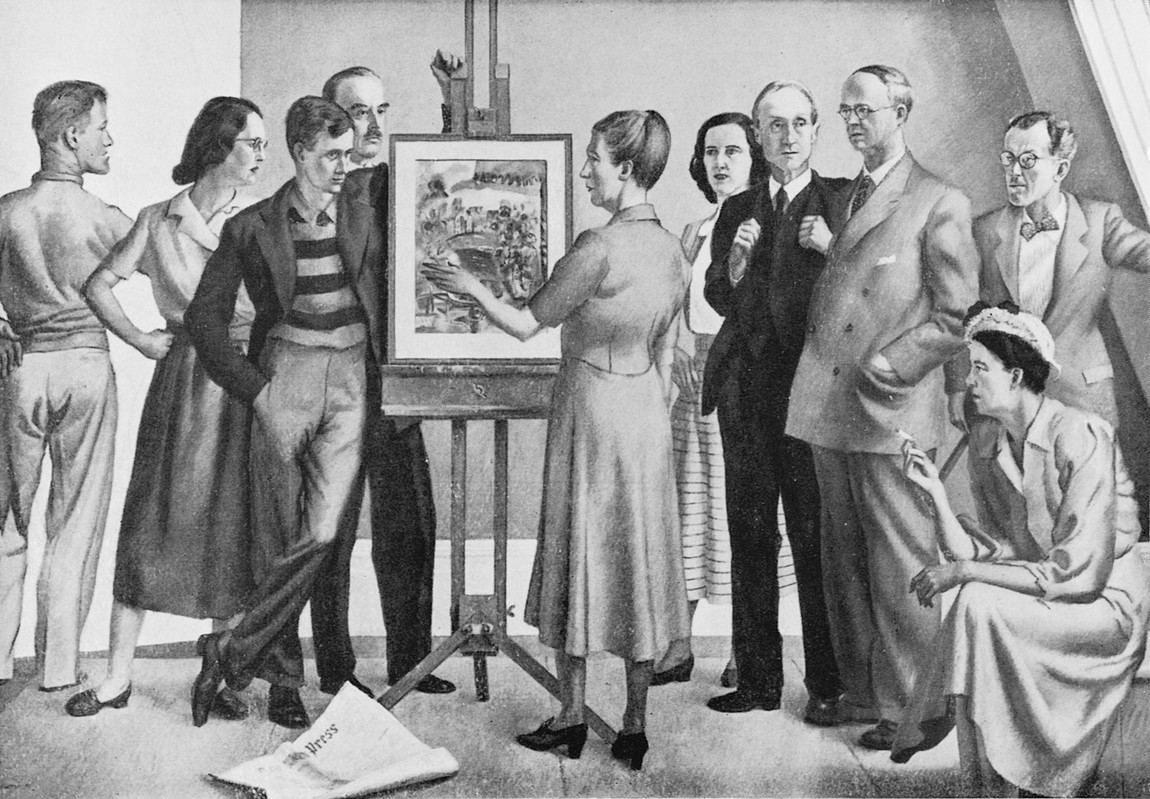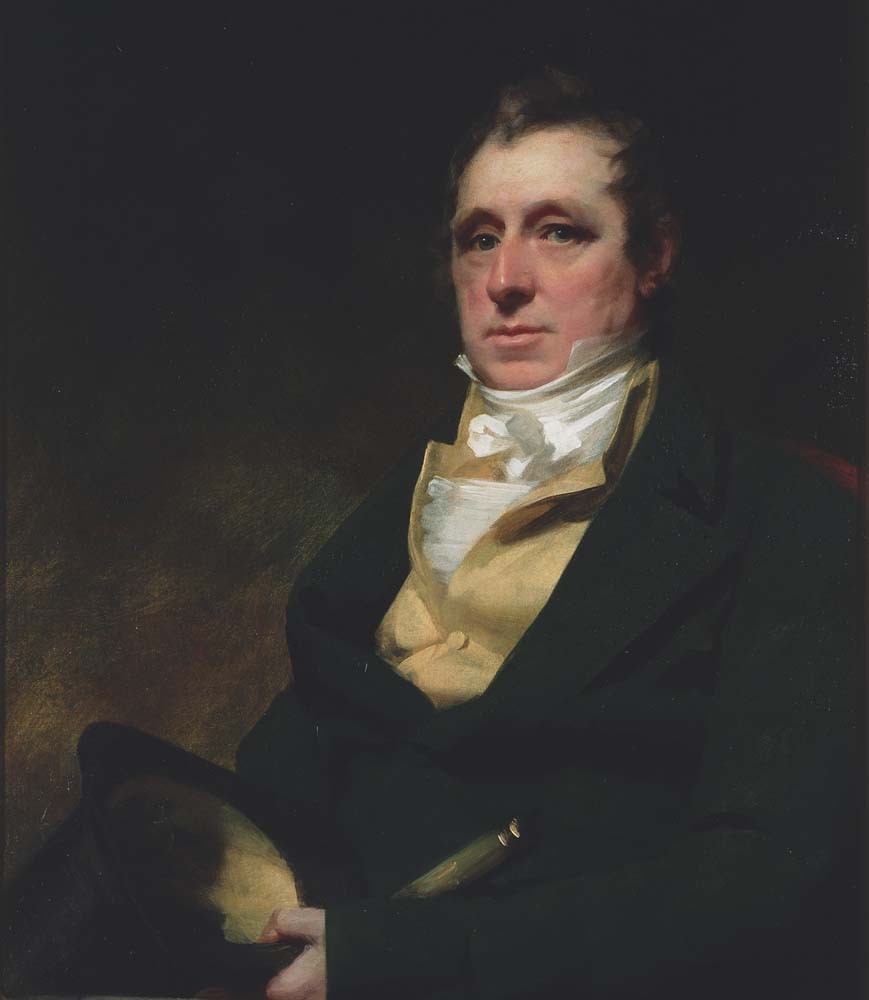Raymond McIntyre
Aotearoa New Zealand, b.1879, d.1933
Suzette
- c. 1914
- Oil on wood panel
- Presented by Mary Good, London, 1975
- 432 x 337mm
- 75/57
Location: Burdon Family Gallery
Tags: earmuffs, hats, monograms, people (agents), portraits, women (female humans)
Raymond McIntyre wrote candidly to his father in 1913 after a visit by several artists to his London studio, describing his approach to composing his portraits from this period:
I have invented her type. Though all the things I do are like her – yet it is the particular points about her which interest me and which I accentuate – and bring out – and I leave the parts that do not help. One [visitor] said what lovely hair she had. Now in this particular picture the hair was pitch black – and she hasn’t black hair at all. Whatever the scheme is, I vary the hair to suit it. [The visitors] were all very interested in my work – and genuinely so, which made me feel glad, because it corroborated my own idea that I was not deceiving myself. You see, one may get keen on someone, and be thinking more of her as her (or she?) than of the work. I am very much alive to this – and sentimentalism is so very inimical to good art. This sort of thing I can immediately detect in other people’s work. That is why I admire Botticelli and Holbein so, there is in their work such an aloofness.
(Raymond McIntyre: A Modernist View, 25 October 2025 – 8 March 2026)
Exhibition History
The Moon and the Manor House, 12 November 2021 – 18 September 2022
In 1911, two years after arriving in London, Raymond McIntyre began his long association with the Goupil Gallery, the city’s leading international contemporary art dealer, and exhibited for the first time with the prestigious New English Art Club. McIntyre built his reputation on small, pared-back landscapes and stylised heads depicting young women. The influence of Japanese woodblock prints is evident, as is the work of William Nicholson, from whom he briefly took lessons. McIntyre became an established figure in London art circles, thanks also to his role as art critic for the Architectural Review.
Treasury: A Generous Legacy, 18 December 2015 – 27 November 2016
Arriving in London in 1909, the Christchurch-born and trained Raymond McIntyre soon gained a reputation there for his small, pared-back landscapes and studies of female heads, painted in an elegant, simplified, Japanese woodblock inspired style. These three paintings were modelled on an actor and dancer who became his principal muse from 1912, sometimes mentioned in his letters home: “The girl who is sitting for me a lot now, Sylvia Constance Cavendish… has a very refined interesting pale face… I have done some very good work from her… she is quite a find.”
McIntyre died in London in 1933. Seven of his works were given by his family between 1938 and 1991.
Between 1912 and 1914 Raymond McIntyre painted a series of women’s heads. Often based on his favourite model, actress Phyllis Cavendish, these elegant and charming women represent a female ideal, rather than specific personalities. Suzette’s hair is typical of the way Breton women coiled their hair. McIntyre has combined solid masses of colour with only a little outline and has adapted the model’s features into an expressive and unified combination of formal elements. This style shows the influence of Japanese wood block prints, the work of the French artist Henri Toulouse Lautrec (1864 – 1901) and art nouveau poster design of the late 19th century. McIntyre was born in Christchurch to artistic and musical parents. He attended the Canterbury College School of Art in the late 1890s and went to London in 1909 to further his studies. By 1915 he was well established as an artist in London circles. Reproductions of his women’s ‘heads’ appeared in the art periodicals The Studio and Colour. McIntyre died in London. (Label date unknown)

